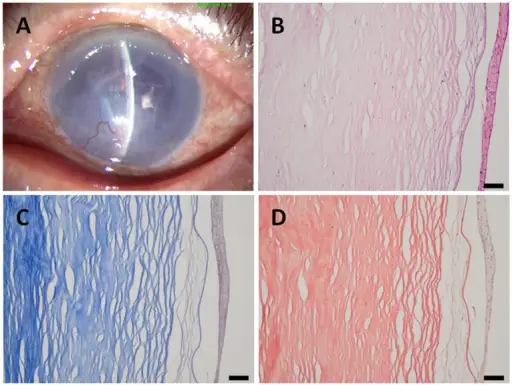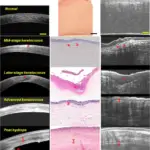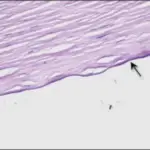Pseudophakic bullous keratopathy is the development of irreversible corneal edema after intraocular lens implantation or cataract surgery.
What is the Pathology of Pseudophakic Bullous Keratopathy?
The pathology of pseudophakic bullous keratopathy is damage to the endothelial leading to the reduction in corneal transparency.
How does Pseudophakic Bullous Keratopathy Present?
Pseudophakic bullous keratopathy presents with epithelial bullae, increased corneal thickness, endothelial fold, and corneal edema.
How is Pseudophakic Bullous Keratopathy Diagnosed?
Pseudophakic bullous keratopathy is diagnosed by histology of recent intraocular surgery, and slit lamp examination.
How is Pseudophakic Bullous Keratopathy Treated?
Pseudophakic bullous keratopathy is treated with administration of hypertonic saline drops, antibiotic drops, lubricating drops, use of bandage contact lens, cornea culture, and corneal transplant.
What is the Prognosis of Pseudophakic Bullous Keratopathy?
The prognosis of pseudophakic bullous keratopathy is a good prognosis with appropriate penetrating keratoplasty.



